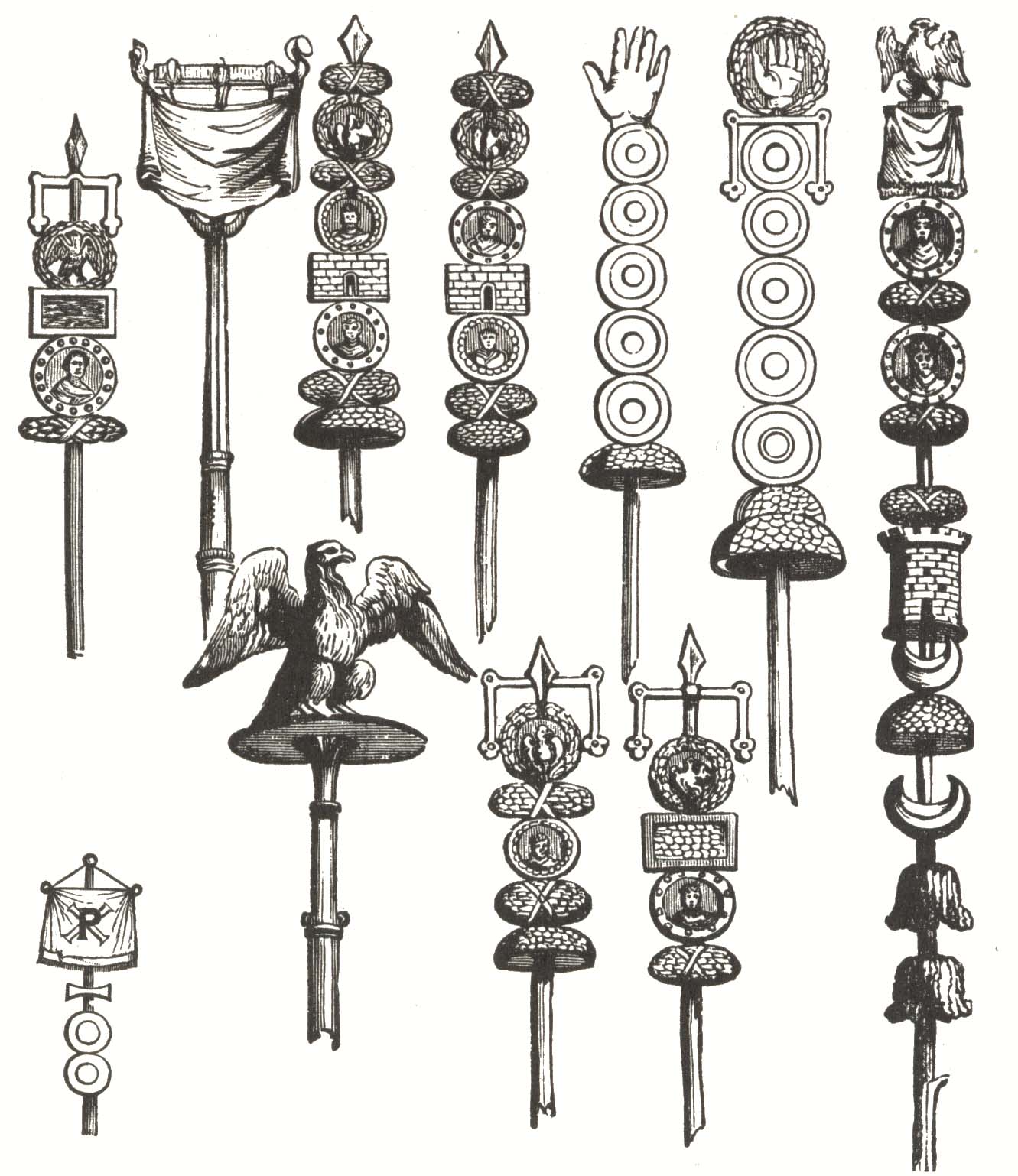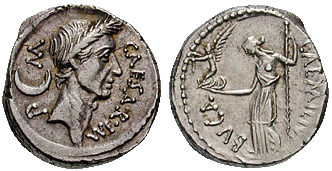|
Vexilloid
A vexilloid is any flag-like (vexillary) object used by countries, organisations, or individuals as a form of representation other than flags. American vexillologist Whitney Smith coined the term ''vexilloid'' in 1958, defining it as This includes vexillum, vexilla, banderoles, pennons, streamers, heraldic flag, heraldic flags, standards, and gonfalons. Examples include the Sassanid battle standard Derafsh Kaviani, and the standards of the Roman legion, Roman legions such as the Aquila (Roman), eagle of Augustus Caesar's Legio X Fretensis, Xth legion and the Draconarius, dragon standard of the Sarmatians; the latter was allowed to fly freely in the wind, carried by a horseman, but depictions suggest that it bore more similarity to an elongated dragon kite than to a simple flag. The use of flags replaced the use of vexilloids for general purposes during late medieval times between about 1100 to about 1400. However, vexilloids still remain in use for specialised purposes, such as ... [...More Info...] [...Related Items...] OR: [Wikipedia] [Google] [Baidu] [Amazon] |
Vexillologist
Vexillology ( ) is the study of the history, symbolism and usage of flags or, by extension, any interest in flags in general.Smith, Whitney. ''Flags Through the Ages and Across the World'' New York: McGraw-Hill, 1975. Print. A person who studies flags is a vexillologist, one who designs flags is a vexillographer, and the art of designing flags is called vexillography. A hobbyist or general admirer of flags is a vexillophile. Etymology The word vexillology is a synthesis of the Latin word (a kind of square flag which was carried by Roman cavalry) and the Greek suffix ("study"). History American scholar Whitney Smith is acknowledged for conceiving "vexillology" in 1957. He wrote, "While the use of flags goes back to the earliest days of human civilization, the study of that usage in a serious fashion is so recent that the term for it did not appear in print until 1959." Before this time, the study of flags was generally considered a part of heraldry, the study of armorial bea ... [...More Info...] [...Related Items...] OR: [Wikipedia] [Google] [Baidu] [Amazon] |
Vexillum
The ''vexillum'' (; : ''vexilla'') was a flag-like object used as a War flag, military standard by units in the Roman army. A common ''vexillum'' displayed imagery of the Aquila (Roman), Roman ''aquila'' on a reddish backdrop. Use in Roman army The word ''vexillum'' is a derivative of the Latin word, ''velum'', meaning a sail, which confirms the historical evidence (from coins and sculpture) that ''vexilla'' were literally "little sails": flag-like standards. In the ''vexillum'', the cloth was draped from a horizontal crossbar suspended from a staff. That is unlike most modern flags in which the "hoist" of the cloth is attached directly to a vertical staff. The bearer of a ''vexillum'' was known as a ''vexillarius'' or ''vexillifer''.Vexillum ''Flagspot.net'', retrieved March 18, 2011 Just as in the case of the regimental colors or fl ... [...More Info...] [...Related Items...] OR: [Wikipedia] [Google] [Baidu] [Amazon] |
Augustus Caesar
Gaius Julius Caesar Augustus (born Gaius Octavius; 23 September 63 BC – 19 August AD 14), also known as Octavian (), was the founder of the Roman Empire, who reigned as the first Roman emperor from 27 BC until his death in AD 14. The reign of Augustus initiated an Roman imperial cult, imperial cult and an era of regional hegemony, imperial peace (the or ) in which the Roman world was largely free of armed conflict. The Principate system of government was established during his reign and lasted until the Crisis of the Third Century. Octavian was born into an equites, equestrian branch of the plebeian Octavia gens, Octavia. Following his maternal great-uncle Julius Caesar's assassination of Julius Caesar, assassination in 44 BC, Octavian was named in Caesar's will as his Adoption in ancient Rome, adopted son and heir, and inherited Caesar's name, estate, and the loyalty of his legions. He, Mark Antony, and Marcus Lepidus formed the Second Triumvirat ... [...More Info...] [...Related Items...] OR: [Wikipedia] [Google] [Baidu] [Amazon] |
Roman Standards
Roman or Romans most often refers to: *Rome, the capital city of Italy *Ancient Rome, Roman civilization from 8th century BC to 5th century AD *Roman people, the people of Roman civilization *Epistle to the Romans, shortened to Romans, a letter written by Paul, found in the New Testament of the Christian Bible *Ar-Rum (), the 30th sura of the Quran. Roman or Romans may also refer to: Arts and entertainment Music *Romans (band), a Japanese pop group * ''Roman'' (album), by Sound Horizon, 2006 * ''Roman'' (EP), by Teen Top, 2011 *"Roman (My Dear Boy)", a 2004 single by Morning Musume Film and television *Film Roman, an American animation studio * ''Roman'' (film), a 2006 American suspense-horror film * ''Romans'' (2013 film), an Indian Malayalam comedy film * ''Romans'' (2017 film), a British drama film * ''The Romans'' (''Doctor Who''), a serial in British TV series People *Roman (given name), a given name, including a list of people and fictional characters *Roman (surname), i ... [...More Info...] [...Related Items...] OR: [Wikipedia] [Google] [Baidu] [Amazon] |
Gerzeh Culture
The Gerzeh culture, also called Naqada II, refers to the archaeological stage at Gerzeh (also Girza or Jirzah), a prehistoric Egyptian cemetery located along the west bank of the Nile. The necropolis is named after el-Girzeh, the nearby contemporary town in Egypt. Gerzeh is situated only several miles due east of the oasis of Faiyum. The Gerzeh culture is a material culture identified by archaeologists. It is the second of three phases of the prehistoric Naqada cultures and so is also known as Naqada II. The Gerzeh culture was preceded by the Amratian culture ("Naqada I") and followed by the Naqada III ("protodynastic" or "Semainian culture"). Historical context Sources differ on dating, some saying use of the culture distinguishes itself from the Amratian and begins circa 3500 BC lasting through circa 3200 BC. Accordingly, some authorities place the onset of the Gerzeh coincident with the Amratian or Badari cultures, i.e. c.3800 BC to 3650 BC, even tho ... [...More Info...] [...Related Items...] OR: [Wikipedia] [Google] [Baidu] [Amazon] |
Military Units
Military organization ( AE) or military organisation ( BE) is the structuring of the armed forces of a state so as to offer such military capability as a national defense policy may require. Formal military organization tends to use hierarchical forms (see Modern hierarchy for terminology and approximate troop strength per hierarchical unit). In some countries, paramilitary forces are included in a nation's armed forces, though not considered military. Armed forces that are not a part of military or paramilitary organizations, such as insurgent forces, often emulate military organizations, or use these structures. History The use of formalized ranks in a hierarchical structure came into widespread use with the Roman Army. The Roman Army was organized into legions, each comprising around 5000 soldiers and led by a legate. Each legion was further divided into centuries which were led by centurions. In modern times, executive control, management and administration o ... [...More Info...] [...Related Items...] OR: [Wikipedia] [Google] [Baidu] [Amazon] |
Fraternal Organisation
A fraternity (; whence, " brotherhood") or fraternal organization is an organization, society, club or fraternal order traditionally of men but also women associated together for various religious or secular aims. Fraternity in the Western concept developed in the Christian context, notably with the religious orders in the Catholic Church during the Middle Ages. The concept was eventually further extended with medieval confraternities and guilds. In the early modern era, these were followed by fraternal orders such as Freemasons, the Rosicrucian Society of England, and Odd Fellows, along with gentlemen's clubs, student fraternities, and fraternal service organizations. Members are occasionally referred to as a ''brother'' or – usually in a religious context – ''frater'' or ''friar''. Today, connotations of fraternities vary according to context including companionships and brotherhoods dedicated to the religious, i.e., (Knights of Columbus), intellectual, academic, physical ... [...More Info...] [...Related Items...] OR: [Wikipedia] [Google] [Baidu] [Amazon] |
Staff Of Office
A staff of office is a staff, the carrying of which often denotes an official's position, a social rank or a degree of social prestige. Apart from the #Eccleasiastical use, ecclesiastical and #Ceremonial, ceremonial usages mentioned below, there are less formal usages. A gold- or silver-topped Walking stick, cane can express social standing (or dandyism). Teachers or prefects in schools traditionally carried less elaborate canes which marked their right (and potential threat) to administer canings, and military officers carry a residual threat of physical punishment in their swagger sticks. Orchestral Conducting, conductors have in their Baton (conducting), batons symbols of authority as well as tools of their trade. Ecclesiastical use Churchwardens (and sometimes sidesman, sidesmen) traditionally carry staves or wands on special occasions as an emblem of their office. In the Eastern Orthodox Church and some of the Oriental Orthodox Churches an ecclesiastical walking stick is ... [...More Info...] [...Related Items...] OR: [Wikipedia] [Google] [Baidu] [Amazon] |
Nome (Egypt)
A nome (, from , ''nomós'', "district") was a territorial division in ancient Egypt. Each nome was ruled by a nomarch (, "Great Chief"). The number of nomes changed through the various periods of the history of ancient Egypt. Etymology The term ''nome'' comes from Ancient Greek νομός ''nomós'' meaning "pasture" extended to "dwelling" and "district"; the Ancient Egyptian term was ( /sɛpɑt/). Today's use of the Ancient Greek rather than the Ancient Egyptian term came about during the Ptolemaic period, when the use of Greek was widespread in Egypt. The availability of Greek records on Egypt influenced the adoption of Greek terms by later historians. History Dynastic Egypt The division of ancient Egypt into nomes can be traced back to prehistoric Egypt (before 3100 BC). These nomes originally existed as autonomous city-states, but later began to unify. According to ancient tradition, the ruler Menes completed the final unification. Not only did the division into ... [...More Info...] [...Related Items...] OR: [Wikipedia] [Google] [Baidu] [Amazon] |
Narmer Palette
The Narmer Palette, also known as the Great Hierakonpolis Palette or the Palette of Narmer, is a significant Egyptian archaeological find, dating from about the 31st century BC, belonging, at least nominally, to the category of cosmetic palettes. It contains some of the earliest hieroglyphic inscriptions ever found. The tablet is thought by some to depict the unification of Upper and Lower Egypt under the king Narmer. Along with the Scorpion Macehead and the Narmer Maceheads, also found together in the main deposit at Nekhen, the Narmer Palette provides one of the earliest known depictions of an Egyptian king. On one side, the king is depicted with the bulbed White Crown of Upper (southern) Egypt, and the other side depicts the king wearing the level Red Crown of Lower (northern) Egypt, which also makes it the earliest known example of a king wearing both types of headdress. The Palette shows many of the classic conventions of Ancient Egyptian art, which must already have ... [...More Info...] [...Related Items...] OR: [Wikipedia] [Google] [Baidu] [Amazon] |






